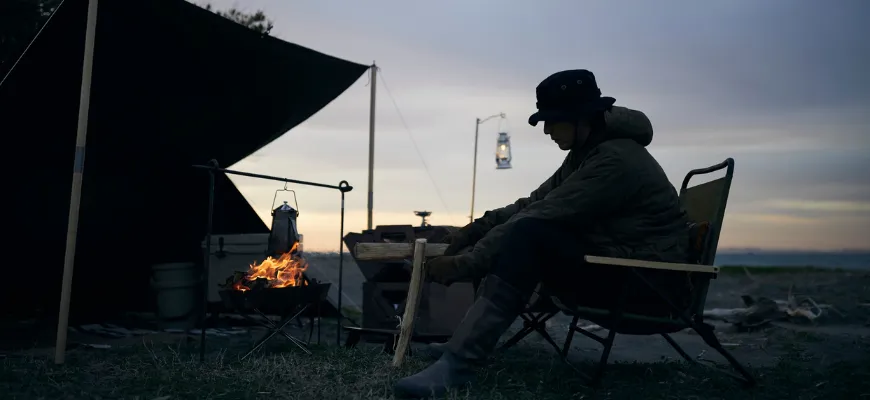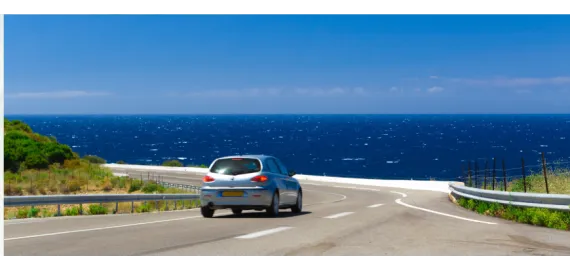Shopping Cart
Location
Cities
The Ultimate Guide to Beating Fatigue on Road Trips
Blog
Home Blog
CATEGORIES
All Categories

The Ultimate Guide to Beating Fatigue on Road Trips
Wide Awake on the Highway: The Ultimate Guide to Beating Fatigue on Road Trips
Introduction: Fatigue—The Unseen Hitchhiker
Picture this: You’re on a long-awaited road trip. Your playlist is perfect, the windows are down just enough to let in that crisp breeze, and the road stretches ahead, promising adventure. Everything feels magical—until suddenly, it doesn’t.
Your eyes grow heavier, your mind drifts off mid-thought, and the white lines on the road begin to blur into one endless stream. That’s fatigue, the invisible hitchhiker none of us invited but many of us encounter on the highway.
Fatigue during driving isn’t just about feeling a little tired. It’s one of the most dangerous states a driver can be in—a silent threat that compromises judgement, reaction time, and safety.
In this ultimate guide, I’ll walk you through:
- What fatigue really is
- Why it happens when we drive
- How drivers typically try to manage it (and why those methods often fall short)
- Out-of-the-box strategies to beat fatigue—whether you’re driving solo or with family
- Personal stories from the road that taught me these lessons
So buckle up—let’s make your next journey safer and more fun.

What Is Fatigue? And Why Is It a Big Deal on the Road?
Fatigue, simply put, is extreme tiredness that affects your body and mind. It goes beyond feeling a little sleepy—it’s a state where your brain starts to slow down, your concentration wavers, and your reflexes aren’t as sharp as they should be.
What makes driver fatigue especially dangerous?
- It sneaks up quietly. You might not realize how impaired you are until you miss a sign, swerve, or worse.
- It affects your ability to react—just like alcohol or drugs.
- It causes “”microsleeps”—brief moments where you actually nod off without realizing it (even for a few seconds). Imagine that happening at 100 km/h.
If you're planning to drive through hill regions, it's even more important to understand the risks. Here's a complete guide to driving on hills for beginners to help you stay safe.

Why Does Fatigue Happen While Driving?
Driving is more mentally demanding than we think. You’re processing tons of information: traffic signals, other vehicles, road conditions, GPS instructions—all while sitting still for hours.
Here’s when fatigue strikes hardest:
- After a poor night’s sleep
- During your body’s natural dip in alertness—typically between 1–5 AM and 2–4 PM
- On monotonous routes—like long highways with little scenery change
- When driving long distances without enough breaks

If you're taking a long road trip, consider including lesser-known attractions along the way. You can explore some of India's hidden gems perfect for road trips that will make your breaks more exciting and refreshing.
Common (But Flawed) Ways Drivers Try to Deal With Fatigue
Let’s get real—I’ve tried these. You probably have too. And while they might work for a bit, they’re not foolproof.
Cranking up the music
Sure, blasting your favourite beats helps for a while. On one trip to Manali, I played “Eye of the Tiger” on loop, convinced it would keep me alert. Spoiler: I was still yawning within 30 minutes.
Rolling the windows down
Fresh air jolts you awake, but once your body adjusts, the effect fades.
Caffeine overload
Coffee, tea, and energy drinks—they help short-term but can lead to an energy crash later. I once chugged two cups of coffee during a trip from Goa, only to feel jittery and restless. If you’re visiting that area, here are some great weekend getaways from Goa you can explore between drives.
Trying to power through
This is the most dangerous. The “I can handle it” mindset leads many to keep driving when they should stop.
The truth? None of these are long-term fixes. The only real cure for fatigue is sleep or rest. But that doesn’t mean we can’t make the journey easier and smarter.

Out-of-the-Box Ways to Beat Fatigue—Solo Adventures
If you’re traveling alone, you need to get creative. Over the years, I’ve tried (and swear by) these fun and practical ideas:
Talk out loud—to yourself
It sounds odd, but narrating what you see, telling stories, or pretending you’re recording a travel podcast keeps your mind active. On a solo drive to Rajasthan, I spent an hour “hosting” a radio show for imaginary listeners. If Rajasthan is on your itinerary, don’t miss these top places to visit there in the winter.
Fatigue-fighting snack box
Pack snacks that require chewing—carrots, apples, and nuts. The act of chewing stimulates your brain. Bonus: it’s healthier than chips.
Switch up audio entertainment
Don’t just rely on your playlist. Mix in stand-up comedy, audiobooks, or language-learning podcasts.
Pull over for a mini dance party
Find a safe spot, get out, and move. A few stretches or a silly dance to your favourite song pumps up energy better than a cup of coffee.
Micro-adjust your seat
Change angles, shift the backrest, and adjust the headrest slightly every couple of hours. This prevents your body from settling into “sleep mode.”

Plan quirky stops
Instead of the usual highway rest area, look for interesting villages, viewpoints, or local markets. On a Delhi–Jaipur drive, I stumbled upon a pottery village—turning a boring break into an experience. If you're looking for ideas near the capital, here are some budget-friendly places to visit around Delhi.
Rentrip Travel Guides
Car Rental Cities in India
Bike Rental Cities in India
Grow your business with Rentrip.
List your bike and become a member of rentrip family.




.webp)



Comments
Be the first one to comment on this post.
Submit a Comment
Login or Register to add your comment